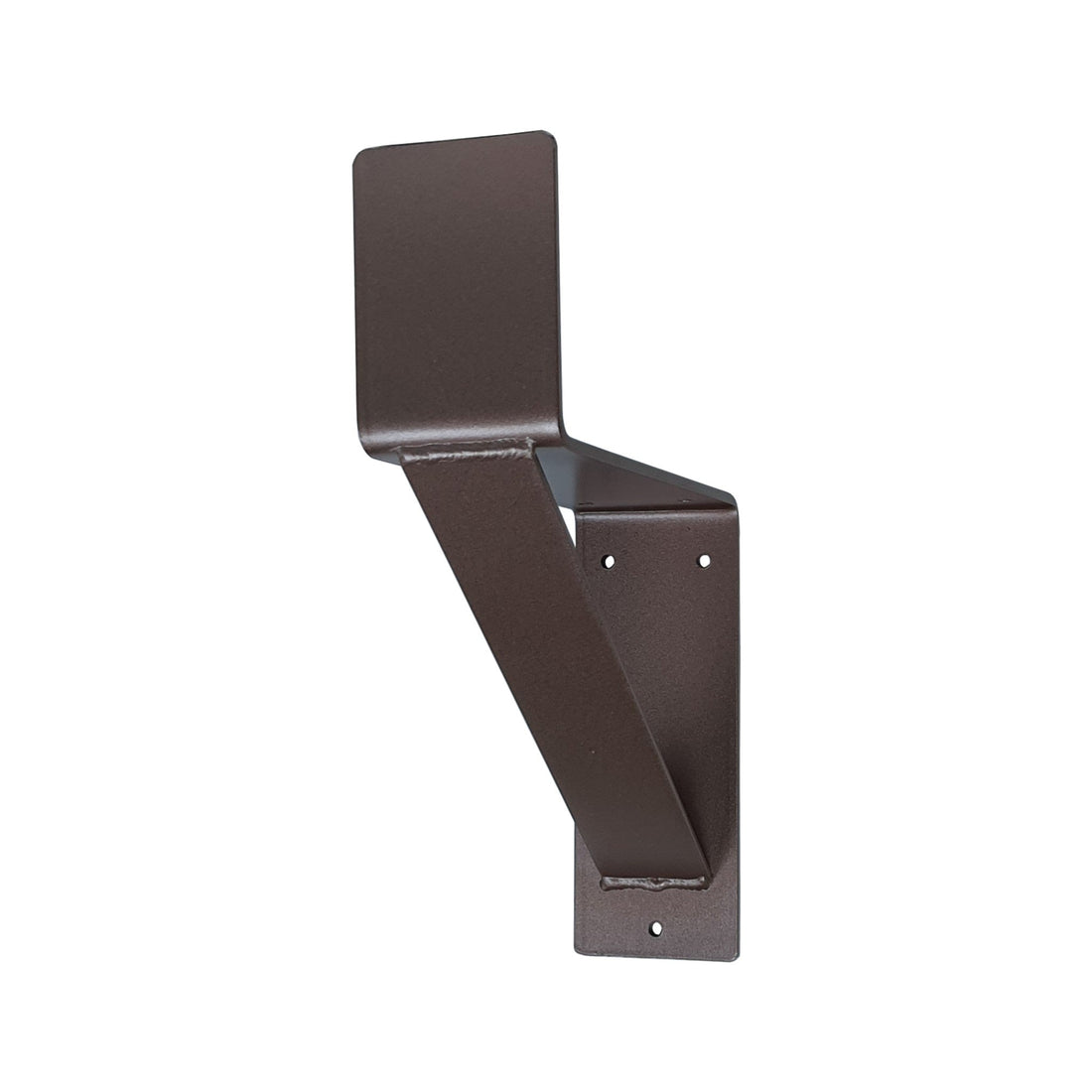
Fireplace Mantel Brackets
Share
Corbels and brackets are decorative supporting structures that have been in use since the New Stone Age. They breathe life and add beauty to otherwise plain and boring architectural constructions like balconies, tables, countertops, floating shelves, and fireplace mantels.
Brackets can be made of steel, stone, wood, or a combination of these materials and are as functional as they are decorative. They can carry a particular load or weight capacity depending on their composition. Today's iron corbels can lift most modern pieces of furniture with relative ease.
If you are interested in learning more about fireplace mantel brackets, keep reading as this article covers everything you need to know about them — from their various uses to the shops from which people have purchased them. In the end, there is also an installation guide in case you need help in mounting your very own fireplace mantel.
What Are Fireplace Mantels?
Mantels, also known as mantelpieces, enclose a portion of the wall and frame a fireplace's opening. Carpenters build mantels using materials like marble, limestone, granite, or high-quality wood.
As they intend to allow people the opportunity to showcase installed ornaments like candlesticks, clocks, or framed photographs, these structures are often thick and flat on top.
Architects initially developed them during the Middle Ages as a hood to prevent smoke from entering the house and direct it toward the chimney. Since then, they have evolved into a decorative component that serves the same function as floating shelves.
Mantels fell out of favor as home builders replaced fireplaces with more modern heating systems. However, for centuries, they served as the primary innovative and aesthetic aspect of a house's living space. For a while, the mantelpiece took center stage in homes and became a subject for sculptors to stand out and showcase their expertise.
Various Uses Of Fireplace Mantel Brackets
Although you can use heavy-duty brackets to install a sturdy fireplace mantelpiece, you can also use them for shelving, mounting hardware, and other home projects that need the structural support they provide. Two of these projects include home decoration and floating shelves installation.
Home Decoration
Many different architectural styles utilize brackets and corbels, but these were particularly popular in 19th-century homes in the USA. You can also find them in Victorian, Second Empire, Tudor, Renaissance Revival, Gothic, Mission, and Craftsman-style homes.
Brackets are essential in achieving an authentic and aesthetic look for your property. Whether you are experimenting with new construction, restoring a historical site, or simply adding an artistic touch to your home, corbels and brackets are excellent choices for making your project look more elegant.
Modern-day brackets, similar to those used for fireplace mantels, are contemporary and sleek. They have clean lines that do not compete with or interfere with modern home décor. On the other hand, the delicate design of more conventional ones mimics the skill and craftsmanship of sculptors from earlier historical periods. These decorations will give your home a new level of flair.
Floating Shelves
Floating shelves are shelves you can secure to a wall without displaying their means of support. Instead, you will be mounting these shelves to the wall using the same brackets you use for mantel installation, giving it a sturdy but "floating" appearance.
A floating shelf can create extra space around your home. Its design makes it possible to install the shelf in places where traditional shelves would not be viable or practical.
A floating shelf can add more significant storage space where it would otherwise be impossible to store anything. You can secure these shelves to use previously unaccounted spaces around corners or behind doors in your household. Overall, a shelf produces storage areas that appear more pristine, well-organized, and elegant.
Differences Between Corbels And Brackets
Corbels and brackets are structural pieces that protrude from a wall and support a specific weight capacity. Corbels and brackets differ significantly in width; the iron corbels of today are often thicker than brackets. In contrast, brackets are frequently twice, three times, or even four times as deep as vast.
Despite their different proportions, both iron corbels and brackets come in sizes that can accommodate and account for even the heaviest shelves and furniture. Each one provides homeowners with various materials and styles from which to choose.
Customized Fireplace Mantel Brackets
Pillars Customs will personalize your fireplace mantel brackets and iron corbels with any letter, shape, or logo you request. They also feature an additional diagonal support bar for all types of applications.
The brackets have ¼-inch holes for easier mounting and installation. You can also specify the weight you need the brackets to carry and their dimensions on their shop's online page.
How Fireplace Mantel Brackets Are Installed
Tools You'll Need:
- Drill
- Tape measure
- Level
- Pencil
- Screwdriver
- Screws
- Stud finder (optional)
Step 1: Search For Wall Studs
Before installing your fireplace mantel, you must search for the studs in your wall by taking down the drywall. If you do not want to remove your drywall, you can use a handheld stud finder to locate them or opt for time-consuming manual methods.
The most reliable manual method is to search for a light switch or a power outlet. This fact is because electricians typically secure them on studs behind your walls.
If you hear a hollow or empty sound indicating no studs in that area, you would have to tap further away. On the other hand, if you hit the spot where it sounds muffled, it could be a sign that you have found a stud. You can also try the "knock method," in which you lightly knock on your wall with a hammer.
Afterward, you would need to measure and draw lines, accounting for the precise dimensions and height at which you should mount the mantel.
Step 2: Start Drilling
Follow the lines and markings you have drawn and start drilling the appropriate holes. At the same time, you can also drill holes into your hardwood mantel.
Next comes the mounting of the floating mantel brackets. If you want to be extra cautious or achieve a more significant weight capacity, stainless steel hex bolts and screws are your best options for bracket installation. These heavy-duty bolts will give you the best hold that will last a long time.
After drilling the holes for the fireplace mantel brackets, you can expect to secure the mantel onto the wall bracket. Put a tiny bit of adhesive at the end of the brackets if you're concerned about the mantel sliding.
Remember that you want to install the mantel while the wall is still gone to test your measurements as everything remains exposed if you need to make alterations.
After you are sure the length, thickness, and other measurements on the mantel are accurate, remove the mantel and reapply the drywall.
Step 3: Install The Fireplace Mantel
You can permanently reinstall the mantel when the decorative parts are in place, and the drywall is again applied. You can use a few drops of glue to the drilled holes and floating mantel brackets, but it should glide onto the studs without difficulty.
You will have a mantel installed with a lot of support after completing your project. Remember that mounting hardware, particularly your floating mantel brackets, to more wall studs will increase their weight capacity.
For every stud your mantel is linked to, it can hold 50 lbs. That means if you connect it to two studs, your mantel can safely handle 100 lbs.
Conclusion
Aside from fireplace mantels, brackets can also support windows, doorways, ceilings, floating shelves, countertops, and archways. They can also become decorative elements for your living spaces, adding visual interest to your home's structures and furniture.
The beauty of your household is in the details, and the architectural uniqueness that corbels and floating mantel brackets provide will undoubtedly elevate the aesthetics of the living spaces within your home.
